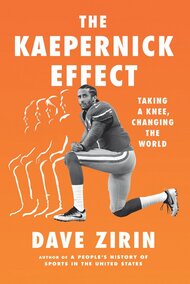When the Arm Breaks: John Chaney and Violence
Hallelujah! Cheney is finally being called out for the thug that he is. The media, after years of letting him coast, has Cheney in a vice-like grip, sparing him no quarter and calling for his ouster.
Hallelujah! Cheney is finally being called out for the thug that he is. The media, after years of letting him coast, has Cheney in a vice-like grip, sparing him no quarter and calling for his ouster. Columnists coast-to-coast are arguing in no uncertain terms that he must finally be held accountable for the violence he's unleashed. Unfortunately, the media's got more than the wrong spelling. They've got the wrong Ch[a]ney. Temple University basketball coach John Chaney is this week's sports antichrist, following the broken arm heard 'round the world. Before last week's contest against St. Joseph's, the Hall of Fame coach said he would get one of his players to "send a message" to their crosstown rivals. During the game, Chaney proceeded to play little-used 250-pound forward Nehemiah Ingram, whom he later described as a "goon," to deliver that message. In the process of committing five fouls in four minutes, Ingram slammed St. Joe's Senior forward John Bryant to the floor. Chaney crowed about it after the game, but following the news that Bryant is out for the season, his arm snapped in two, Chaney now finds himself being dragged pillar to post. Of course, what Chaney ordered is inexcusable. Yet any discussion of John Chaney has to take into account the fact that the man has built a sterling reputation over the years for being a strong, caring, blunt, and proudly Black coach. He has earned both praise and scorn by standing up for African-American athletes who come from neighborhoods that would make Johnathan Kozol wince. Chaney, for all these reasons, is a figure who commands tremendous respect and moral authority. That reputation may well be shattered in the wake of what has occurred and perhaps it should be. But it is an absolute joke for Chaney to be held up as the symbol for all that's wrong in the world, from the violence in our culture to tooth decay. Washington Post columnist Mike Wise likened Chaney to Jack Nicholson's murderous Colonel Nathan Jessup in "A Few Good Men," writing, "[People] aren't seeing him for who he [really] is: the coach who essentially ordered a Code Red. We hear about Chaney being from the [el]bow-in-the-throat school of basketball—that you have to be nasty and physical to win at the Division I level—and those who don't see it that way can't handle the truth." To compare Chaney to the Guantanamo-Bay-running Jessup once again begs the question if people are talking about the right Cheney. It's a broken arm. It's not 100,000 Iraqis. It's not 1,500 US troops dying in a war based upon a lie. It's not Abu Ghraib. It's not a Code Red. What it is was John Chaney doing what many basketball coaches from the earliest pee-wee leagues do: send in "goons" to knock, push, smack and head-butt opposing players as a method of intimidation. Chaney's only difference is that he announced it beforehand and celebrated in the aftermath. The fact that "everyone does it" by no means makes it right. However, instead of drawing and quartering Chaney, it should force us to examine why the fun and games of collegiate sports can lead to such tumult and pain. Clarity is king here because it is argued that the roots of sporting violence lie in the corrupting values of competition or some sort of male [or more specifically, African-American male] predisposition toward aggression. Such theories should be buried for good alongside exorcisms, phrenology, and witch-burnings. The violence in sports—the violence that caused Chaney to anoint a "goon" to do harm to another young player—stems from both the win-at-all-costs nature of sports and the broader violence that festers in our society like the constant buzz of hornets in our very walls. This unhealthy atmosphere is fueled by a culture of sports commentary that feeds off the drama of big hits, sharp elbows, and bloody brawls. I am as guilty of this as the yipping seals on ESPN radio. In a column last year—and three basketball lifetimes ago—on Ron Artest, I praised his ability on defense, writing that it was "like fighting Mike Tyson in a phone booth." Since then Artest has given us a more vivid perspective on what being in a phone booth with Mike Tyson is really like. I am embarrassed by what I wrote, because there is enough beauty and virtue in sports to fill columns from now until doomsday. Glorifying play that causes people physical harm is just pathetic and has nothing to do with the kind of sports I want to see. There is beauty in the very practice of sports, we just need to know where to look. Sports produce two strains that have the capacity to shine in vivid fashion. There is the sportsmanship, brotherhood, and sisterhood, people learning how to operate on a team, learning how to break down walls of race, nationality, and even increasingly, sexual orientation. Anyone who has ever played on an interracial team in a segregated city or school system knows exactly what I am talking about. Anyone who has ever coached young women's sports and seen the growth of confidence that can grow out of that also knows how fantastic and positive sports can be. Even the demonstration of St. Joe's players wearing armbands with John Bryant's number and Nehemiah Gordon's heartfelt regret demonstrates what is possible. But violence shrouds and haunts these same games. We have every right—at every level of sports—to demand better: more sportsmanship, more fair play, and more of the kind of competition that results in the building of character instead of the breaking of arms. But as long as billions are tied to so-called amateur athletics, with jobs and athletic budgets in the balance, don't expect it to change. Also don't expect sports to be less violent as long as villages can be torn to bits, with thousands of lives lost, all in the name of freedom. If everyone aghast at Chaney's actions—from the media to the sports radio audiences—are that concerned about the rising level of violence in our world, then here is a news-flash: you are taking on the wrong Chaney.More columns ⇒
Support the Work
Please consider making a donation to keep this site going.
Featured Videos
Dave on Democracy Now!

